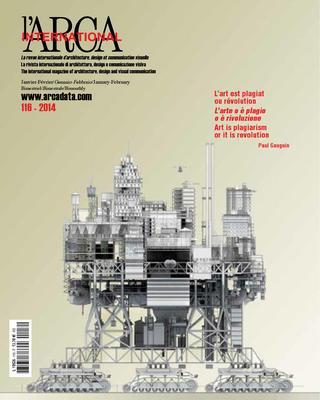
L'Arca International N° 116
January / February 2014
Click here for contents
One single organism
Over the last few years it seems to have been globally accepted that architectural design is finding it increasingly difficult to invent new spatial and structural situations inside buildings that are capable of significantly modifying traditional layouts.
As has always been the case, the distribution of spaces and functions is constrained by standard regulations and the constructions permitted for holding them. This conceptual and normative framework increasingly favours architectural aesthetics influenced by the outside appearance of buildings and also structural exploits making buildings more readily identifiable as macrostructures rather than organisms to be lived and worked in.
This situation is forcing architects and builders to try and come up with solutions that make their designs stand out from the surrounding setting through increasingly original and eye-catching projects.
All this means is once again resulting in the creation of new urban fabrics composed of buildings that are separate from each other and rather striking to look at, but whose public space (inside these areas) is entirely designed and devoted to road traffic, meaning that all the usual problems associated with peril and pollution continue to make themselves felt. Traffic inevitably runs around every single area, even those devoted to other purposes and activities.
This situation keeps on arising due to the age-old principle according to which, despite all kinds of different research projects and new ideas, cities are still envisaged as they were back in Ancient Rome with various categories of public roads connecting together private spaces. Paris, a city that has always had the courage to plan major urban projects, is once again proposing the idea of constructing one single new 80-hectare organism outside its city bounds, where a multitude of different activities will unfold in one single construction.
A macro-building entirely covered with lawns, whose constantly illuminated interior spaces are all organised in accordance with the requirements of the activities going on inside, and all the vertical and horizontal, public and private communications are programmed and constructed as if they were inside a huge ship. And, as in the case of a large ship, the outside appearance is not the crucial factor.
Everything depends solely on the design of the interior spaces that are all geared to generating urban-environmental well-being rather than potentially perilous or violent situations. We are presenting this project this month, even though we do not yet know how good the final construction will be, relying solely on the principles it is based on, because I am firmly convinced it will provide an excellent foretaste of the near future, when architecture will once again take on its responsibilities for constantly attempting to raise people’s standard of living, at least as regards the places where they live, without harming the planet that accommodates them.
Cesare Maria Casati

